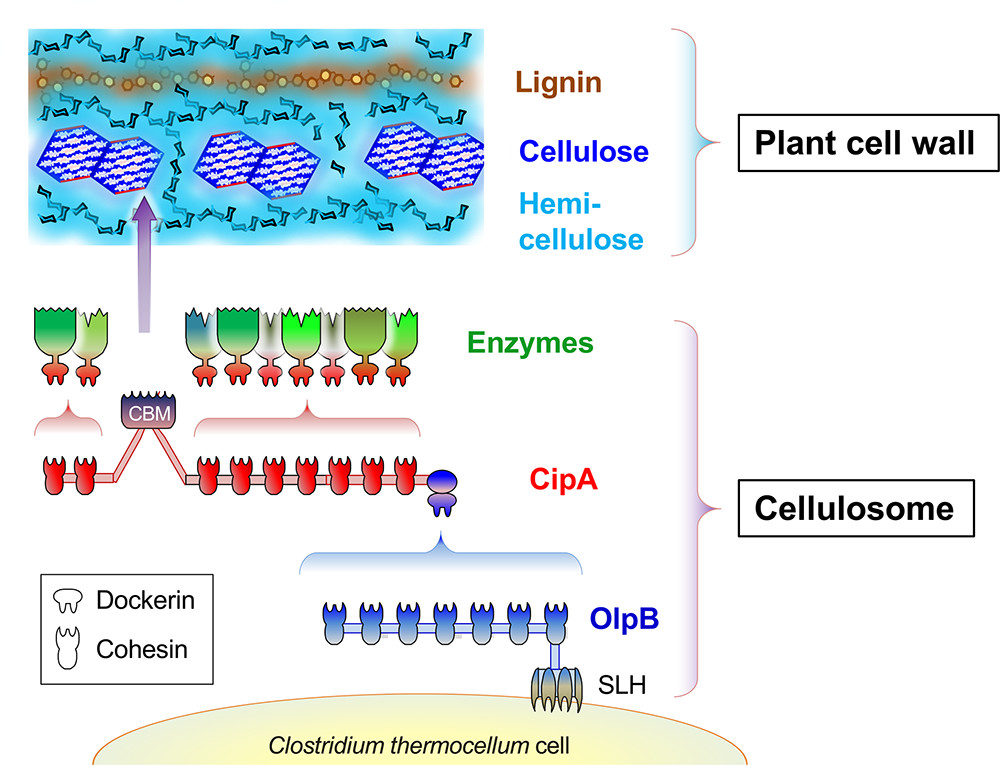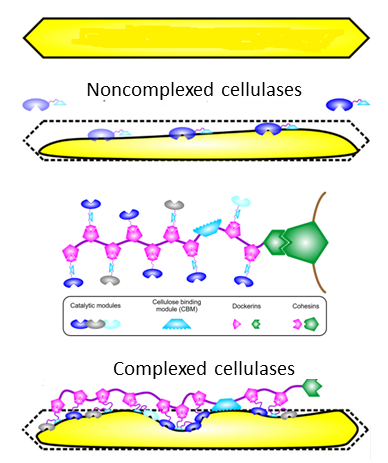The cellulosome is a supramolecular multi enzymatic protein complex that functions as a biological nanomachine of cellulosic biomass degradation. The cellulosome complex binds to cellulose fibrils in the plant cell walls via a binding module of a primary scaffold protein. It is tethered to the bacterial cell wall via a surface-homology module of the anchoring protein. The cellulose-degrading bacterium Clostridium thermocellum assembly can contain 63 different types of enzymes, including cellulases, hemicellulases, and other glycoside hydrolases that work synergistically to degrade the different plant cell wall polysaccharides.
In the article entitled: A Biological Nanomachine at Work: Watching the Cellulosome Degrade Crystalline Cellulose, the authors report time-lapse visualization of crystalline cellulose degradation by individual cellulosomes from C. thermocellum by atomic force microscopy. Upon binding to cellulose, the cellulosomes switch to elongated, even filamentous shapes and morph these dynamically at below 1 min time scale according to requirements of the substrate surface under attack. Compared with non-complexed cellulases that peel off material while sliding along crystalline cellulose surfaces, the cellulosomes remain bound locally for minutes and remove the material lying underneath. The consequent roughening up of the surface leads to an efficient deconstruction of cellulose nanocrystals both from the ends and through fissions within. Distinct modes of cellulose nanocrystal deconstruction by nature’s major cellulase systems are thus revealed.




